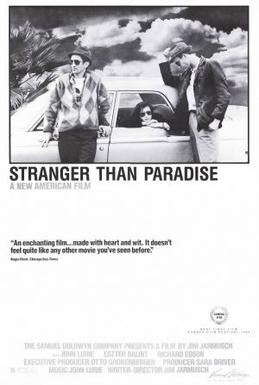Welcome to Late Night Retro Television Reviews, a feature where we review some of our favorite and least favorite shows of the past! On Wednesdays, I will be reviewing Monsters, which aired in syndication from 1988 to 1991. The entire series is streaming on YouTube.
Mister Who?
Episode 2.15 “Mr. Swlabr”
(Dir by Warner Shook, originally aired on January 28th, 1990)
11 year-old Roy Barton (Robert Oliveri) spends all of his time in the basement of his house, playing with his train set and making dinosaur figurines. His mother (Kate McGregor-Stewart) is abusive. His older sister (Danielle Ferland) is spoiled and self-centered. Roy doesn’t have a friend in the world and has never gotten over his father abandoning the family when he was younger.
One day, Roy opens a box of cereal and finds a small dinosaur toy. Roy puts the toy in water and it comes to life. Mr. Swlabr (voiced by New York performance artist Rockets Redglare) says that he’ll be Roy’s friend and promises that he’ll never leave. Awwwww! Roy’s evil mother tries to drown Mr. Swlabr with a hose but the water just causes Mr. Swlabr to grow into an even bigger dinosaur. Mr. Swlabar spits a bunch of green goo on Roy’s sister. It doesn’t hurt her but it does convince her and her mother to do whatever Roy tells them to do.
This was an odd episode. It played out like a particularly macabre fairy tale, with Roy finally getting a friend who was big enough to bully everyone who was previously bullying him. It had its moments. I teared up a bit when Roy begged Mr. Swlabr not to abandon him the way that his father did. But, in the end, the hand puppet dinosaur was a bit too silly to be an effective monster.
Probably the most interesting thing about this episode was the casting of Rockets Redglare as the voice of Mr. Swlabr. From the 1970s up until his death in 2001, Rockets Redglare was a fixture of the New York underground. He was a comedian, a performance artist, and eventually a character actor. He worked as a drug counselor while, at the same time, delivering drugs to people like Jean-Michel Basquiat and Sid Viscous. He was reportedly the last known person to have seen Sid and his girlfriend Nancy Spungen alive and he was a suspect when Nancy was later found dead. According to Phil Strongman’s Pretty Vacant: A History of Punk, Redglare later told his friends that he was the one who had murdered Nancy. That said, musician Howie Pyro later said that Redglare was notorious for making up stories to get attention. (For their part, the police focused their investigation on Sid Viscous, who they claimed confessed despite the fact that Viscous was also too drugged out to really remember much of anything. The main lesson here: Stay away from the heroin.) Redglare went on to become a bit of an underground celebrity, appearing in movies directed by Jim Jarmusch, Stee Buscemi, and Olive Stone. (He played himself in Julian Schnabel’s Basquiat). Redglare died at the age of 52, saying in his final interview that everything he did, he “did to excess.” RIP, Mr. Swlabr.


